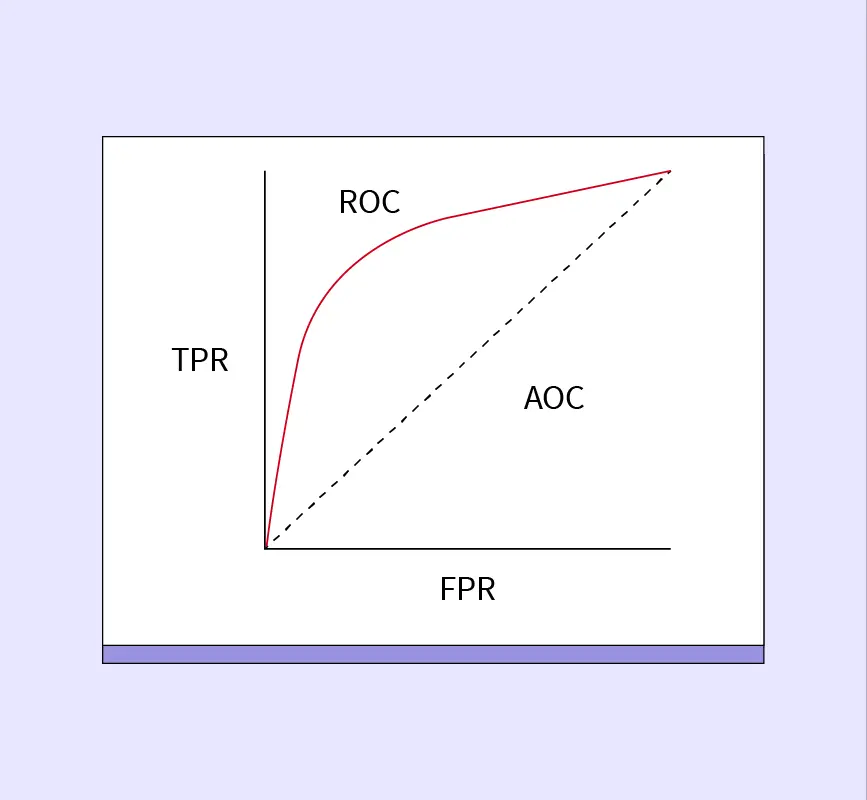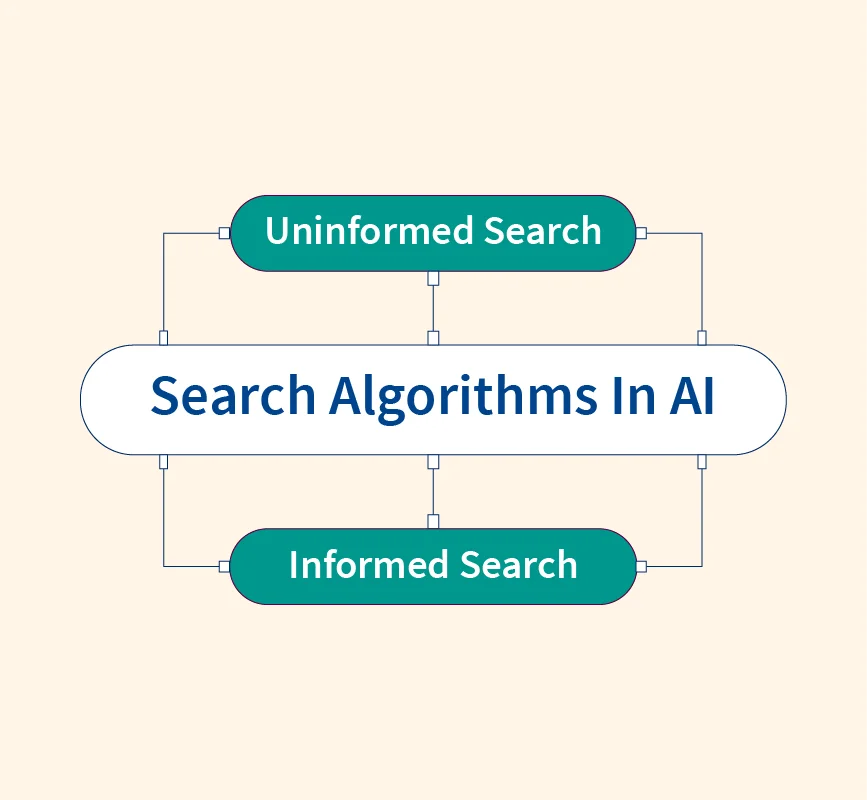Depth First Search (DFS) is a foundational algorithm used for traversing or searching through graph and tree data structures. It plays a significant role in Artificial Intelligence (AI) for problem-solving and pathfinding tasks. By exploring as far as possible along each branch before backtracking, DFS mimics how humans often approach puzzles or games.
Search algorithms like DFS are essential in AI, helping machines navigate decision trees, detect cycles in graphs, or solve complex problems modeled as graphs. Its simplicity and efficiency make DFS a widely used technique in AI applications such as navigation systems, network analysis, and game-solving strategies.
What is Depth-First Search in AI?
Depth First Search (DFS) is an algorithm used for traversing or searching tree and graph data structures. It explores each branch of a graph or tree as deeply as possible before backtracking to examine unexplored branches. This depth-first approach makes DFS particularly useful for solving problems where a solution is found by exploring paths one at a time.
Key Features of DFS:
- Recursive Nature: DFS can be implemented using recursion, where the algorithm explores a node’s neighbors one by one and backtracks when needed.
- Stack-Based Implementation: DFS uses a stack to keep track of visited nodes. This can be done explicitly (using a data structure) or implicitly (using recursion).
- Traversal Order: The algorithm starts at a given node, explores as far as possible along a branch, and backtracks when no further nodes can be visited.
Edge Classes in a Depth-First Search Tree Based on a Spanning Tree
When traversing a graph using Depth First Search (DFS), edges encountered during the traversal are classified into four distinct categories. These classifications help understand the graph’s structure and properties, such as detecting cycles or analyzing relationships between nodes.
1. Tree Edges:
- Represent edges that lead to a previously unvisited node.
- These edges form the backbone of the DFS spanning tree.
- Example: If DFS starts at node A and visits node B for the first time, the edge A → B is a tree edge.
2. Back Edges:
- Connect a node to one of its ancestors in the DFS tree.
- These edges indicate cycles in the graph.
- Example: During traversal, if node C points back to node A (already visited), the edge C → A is a back edge.
3. Forward Edges:
- Connect a node to a descendant that has already been visited (not part of the DFS tree).
- Example: If DFS has explored A → B → C and later finds an edge A → C, it is classified as a forward edge.
4. Cross Edges:
- Connect nodes in different branches or subtrees.
- These edges appear in directed graphs and do not form part of the DFS tree.
- Example: If DFS completes visiting nodes in one branch and encounters an edge leading to a node in a previously completed branch, it is a cross edge.
Why Edge Classification Matters:
- Cycle Detection: Back edges indicate the presence of cycles in the graph.
- Graph Analysis: Forward and cross edges help analyze directed acyclic graphs (DAGs) and dependencies.
- Debugging Traversals: Understanding edge types assists in debugging DFS-based algorithms.
Key Characteristics of DFS
Depth First Search (DFS) is a straightforward yet powerful algorithm with distinct characteristics that make it suitable for various graph traversal and search tasks in Artificial Intelligence.
1. Stack-Based Approach
- Mechanism: DFS uses a stack to manage nodes during traversal. This stack can be:
- Explicit: Using a data structure like a list.
- Implicit: Using recursion, where the system call stack keeps track of visited nodes.
- Example: If visiting node A → B → C, the stack maintains the nodes in this order until backtracking occurs.
2. Depth-First Nature
- Mechanism: The algorithm explores one branch of the graph as deeply as possible before backtracking to explore other branches.
- Benefit: This approach is efficient for problems where the solution is located deep in the graph, such as puzzle-solving.
3. Time Complexity
- Formula: O(V+E)
- Where:
- V: Number of vertices (nodes).
- E: Number of edges.
- Reason: Each vertex and edge is visited once during the traversal.
4. Space Complexity
- Formula: O(V)
- Explanation: The maximum space required corresponds to the depth of the recursion stack or the size of the explicit stack.
- Worst-Case Scenario: Space consumption increases in graphs with deep, linear structures.
5. Unweighted Graph Traversal
- DFS does not consider edge weights, making it ideal for simple traversal tasks but unsuitable for shortest-path problems in weighted graphs.
Example of Depth-First Search Algorithm
Let’s illustrate how Depth First Search (DFS) operates with a step-by-step example on a simple graph. This will help you understand the traversal process and backtracking mechanism.
Graph Representation:
Consider the following graph:
- Nodes: A, B, C, D, E
- Edges:
- A → B, A → C
- B → D, B → E
Step-by-Step DFS Traversal:
Starting Node: A
- Visit Node A:
- Mark A as visited.
- Add its neighbors (B, C) to the stack (or recursive call).
- Visit Node B (Next in Stack):
- Mark B as visited.
- Add its neighbors (D, E) to the stack.
- Visit Node D (Next in Stack):
- Mark D as visited.
- Since D has no unvisited neighbors, backtrack to B.
- Visit Node E:
- Mark E as visited.
- Since E has no unvisited neighbors, backtrack to B, then to A.
- Visit Node C:
- Mark C as visited.
- Since C has no unvisited neighbors, backtracking is complete.
Order of Visited Nodes:
A → B → D → E → C
Visual Representation:
| Step | Current Node | Stack Contents | Visited Nodes |
| 1 | A | B, C | A |
| 2 | B | C, D, E | A, B |
| 3 | D | C, E | A, B, D |
| 4 | E | C | A, B, D, E |
| 5 | C | – | A, B, D, E, C |
How to Use DFS Algorithm (Step by Step)
Implementing Depth First Search (DFS) involves a systematic approach to traverse a graph or tree. Below is a detailed step-by-step guide to using the DFS algorithm.
1. Initialization
- Mark All Nodes as Unvisited: Start with a list or a dictionary to track visited nodes.
- Select a Starting Node: Choose the node from which the traversal begins.
2. Traversal Process
- Visit the Starting Node:
- Mark it as visited.
- Add it to a stack (or recursive call stack) to keep track of traversal.
- Explore Adjacent Nodes:
- For each unvisited neighbor of the current node:
- Visit the node.
- Mark it as visited.
- Add it to the stack.
- For each unvisited neighbor of the current node:
- Backtrack When Necessary:
- If a node has no unvisited neighbors, backtrack to the previous node in the stack and continue.
3. End Condition
- Continue the process until all nodes in the graph have been visited.
Iterative DFS (Using Stack):
- Push the starting node onto the stack.
- While the stack is not empty:
- Pop the top node.
- Mark it as visited.
- Push all unvisited neighbors of the popped node onto the stack.
Recursive DFS:
- Start with the first node.
- For each unvisited neighbor of the current node:
- Recursively visit the neighbor.
- Backtrack once all neighbors are visited.
Example for Node A → B → D → E → C:
- Step 1: Start at A (mark visited).
- Step 2: Visit B (mark visited and add its neighbors D and E to the stack).
- Step 3: Visit D (mark visited, no neighbors left, backtrack to B).
- Step 4: Visit E (mark visited, no neighbors left, backtrack to A).
- Step 5: Visit C (mark visited).
Pseudocode of Depth-First Search Algorithm
Below is a clear and concise pseudocode representation of the DFS algorithm, both in its recursive and iterative implementations. This will help beginners understand how DFS operates in practice.
Recursive DFS Pseudocode
function DFS(node):
mark node as visited
for each neighbor of node:
if neighbor is not visited:
DFS(neighbor)Explanation:
- Start at the initial node.
- Mark the node as visited to avoid revisiting.
- Recursively explore all unvisited neighbors.
- Backtrack when no unvisited neighbors remain.
Iterative DFS Pseudocode (Using a Stack)
function DFS_Iterative(startNode):
create a stack and push startNode onto it
while stack is not empty:
currentNode = pop from stack
if currentNode is not visited:
mark currentNode as visited
for each neighbor of currentNode:
if neighbor is not visited:
push neighbor onto stackExplanation:
- Initialize a stack with the starting node.
- While the stack is not empty:
- Pop the top node from the stack.
- If the node hasn’t been visited, mark it as visited.
- Push all its unvisited neighbors onto the stack.
Comparison of Recursive and Iterative DFS:
- Recursive DFS: Simplifies implementation but uses the call stack, which can lead to stack overflow in deep or large graphs.
- Iterative DFS: Avoids stack overflow by using an explicit stack, making it more suitable for deep graphs.
Complexity of Depth-First Search Algorithm
Analyzing the complexity of Depth First Search (DFS) helps understand its efficiency in terms of time and space. This is crucial for evaluating the suitability of DFS for various applications.
1. Time Complexity
- Formula:
- O(V+E)
- V: Number of vertices (nodes).
- E: Number of edges.
Explanation:
- Each vertex is visited once.
- Each edge is explored once during traversal.
- The combined time to visit all vertices and edges makes the algorithm efficient for both sparse and dense graphs.
Example: In a graph with 5 vertices and 6 edges:
O(5+6)=O(11)
2. Space Complexity
- Formula: O(V)
- V: Maximum depth of the recursion stack or size of the explicit stack used in the iterative approach.
Explanation:
- DFS requires memory to store:
- The list of visited nodes.
- The recursion stack or the explicit stack for iterative DFS.
Worst Case:
- For a graph structured as a linear chain, the recursion stack depth is equal to the number of vertices, making the space complexity
- O(V)
- O(V).
Comparison with Breadth-First Search (BFS):
| Aspect | DFS | BFS |
| Time Complexity | O(V+E) | O(V+E) |
| Space Complexity | O(V) | O(V) |
| Approach | Depth-first | Level-by-level |
| Usage | Better for deep searches | Better for shortest-path |
Applications of Depth-First Search Algorithm
Depth First Search (DFS) is widely used in Artificial Intelligence and computer science due to its flexibility and efficiency. Here are some key real-world applications:
1. Cycle Detection
- Purpose: Identifies cycles in graphs by detecting back edges during traversal.
- Example: In network analysis, detecting feedback loops or circular dependencies.
2. Pathfinding
- Purpose: Finds paths between nodes in unweighted graphs.
- Example: Solving puzzles like mazes or determining routes in navigation systems.
3. Topological Sorting
- Purpose: Arranges vertices in a Directed Acyclic Graph (DAG) in a linear order based on dependencies.
- Example: Task scheduling where certain tasks must be completed before others.
4. Connected Components
- Purpose: Identifies all connected components in a graph.
- Example: In social networks, finding clusters or groups of users connected by friendships.
5. Solving Puzzles and Games
- Purpose: Explores all possible moves to find solutions in games modeled as graphs.
- Example: Depth-first exploration of possible states in chess or Sudoku.
6. Strongly Connected Components (SCCs)
- Purpose: Finds SCCs in directed graphs using Kosaraju’s or Tarjan’s algorithms, both based on DFS.
- Example: Analyzing web pages to determine clusters of interlinked pages.
DFS is a versatile algorithm, solving problems across domains such as networking, AI, and computational biology. Its efficiency and adaptability make it an indispensable tool for graph traversal and problem-solving.
Code Implementation of Depth-First Search Algorithm
Below are examples of Depth First Search (DFS) implementations in Python for both recursive and iterative approaches. These implementations are easy to follow for beginners.
1. Recursive DFS in Python
# Recursive implementation of DFS
def dfs_recursive(graph, node, visited):
if node not in visited:
print(node, end=" ") # Process the node
visited.add(node)
for neighbor in graph[node]:
dfs_recursive(graph, neighbor, visited)
# Example graph represented as an adjacency list
graph = {
'A': ['B', 'C'],
'B': ['D', 'E'],
'C': [],
'D': [],
'E': []
}
# Call the function
visited = set()
dfs_recursive(graph, 'A', visited)
Output:
A B D E C2. Iterative DFS in Python
# Iterative implementation of DFS
def dfs_iterative(graph, start_node):
visited = set()
stack = [start_node]
while stack:
node = stack.pop()
if node not in visited:
print(node, end=" ") # Process the node
visited.add(node)
for neighbor in reversed(graph[node]): # Reverse to maintain order
stack.append(neighbor)
# Example graph represented as an adjacency list
graph = {
'A': ['B', 'C'],
'B': ['D', 'E'],
'C': [],
'D': [],
'E': []
}
# Call the function
dfs_iterative(graph, 'A')
Output:
A B D E CKey Points:
- Recursive Approach: Simpler but may lead to stack overflow in deep graphs.
- Iterative Approach: Uses an explicit stack, making it more memory-efficient for large graphs.
- Graph Representation: The graph is represented as an adjacency list for simplicity.
Conclusion
Depth First Search (DFS) is a fundamental algorithm in Artificial Intelligence and computer science, widely used for graph and tree traversal. Its depth-first approach enables efficient exploration of nodes, making it ideal for solving problems in pathfinding, cycle detection, and graph analysis.
Key takeaways:
- Efficiency: DFS operates with a time complexity of
- O(V+E)
- O(V+E), making it suitable for large graphs.
- Versatility: Applications include solving puzzles, detecting cycles, and scheduling tasks using topological sorting.
- Implementation: DFS can be implemented recursively or iteratively, providing flexibility based on the use case.
By mastering DFS, you gain a powerful tool for tackling a wide range of problems, from simple traversal to complex AI-based decision-making tasks.
FAQs on Depth First Search (DFS) for Artificial Intelligence
1. How does DFS handle backtracking?
DFS uses a stack (explicit or implicit through recursion) to backtrack when a node has no unvisited neighbors, returning to the previous node to explore other branches.
2. Is DFS memory-efficient?
DFS is memory-efficient for shallow graphs, with a space complexity of O(V). However, for deep or infinite graphs, it may lead to stack overflow in the recursive approach.
3. Can DFS find the shortest path?
No, DFS does not guarantee the shortest path in weighted or unweighted graphs. Algorithms like Breadth First Search (BFS) or Dijkstra’s are better suited for such tasks.
4. Is DFS a greedy algorithm?
No, DFS is not greedy. It does not make locally optimal decisions at each step with the goal of finding a global optimum.
5. When is DFS preferred over BFS?
DFS is preferred for problems requiring deep exploration, such as solving mazes, detecting cycles, or analyzing graph connectivity.


